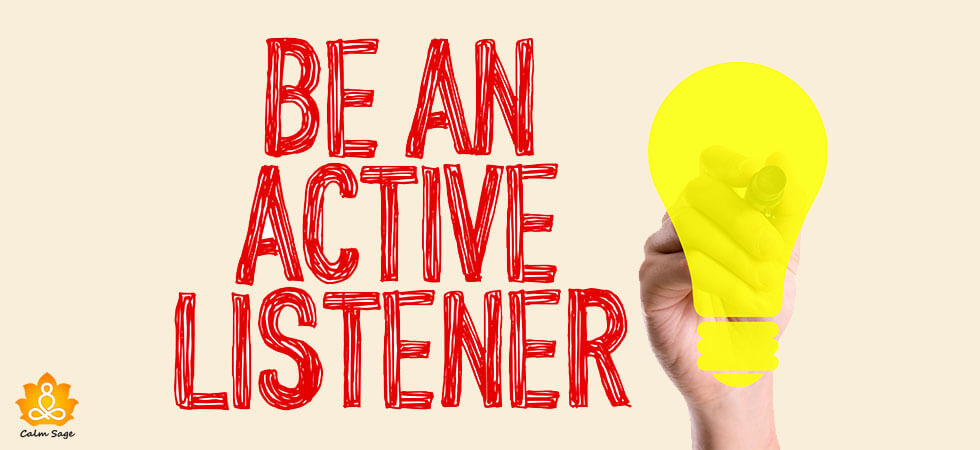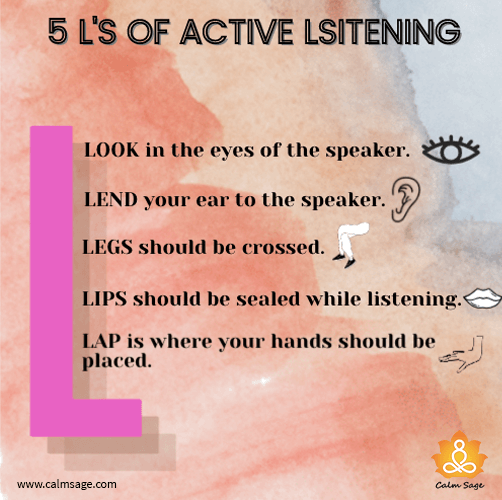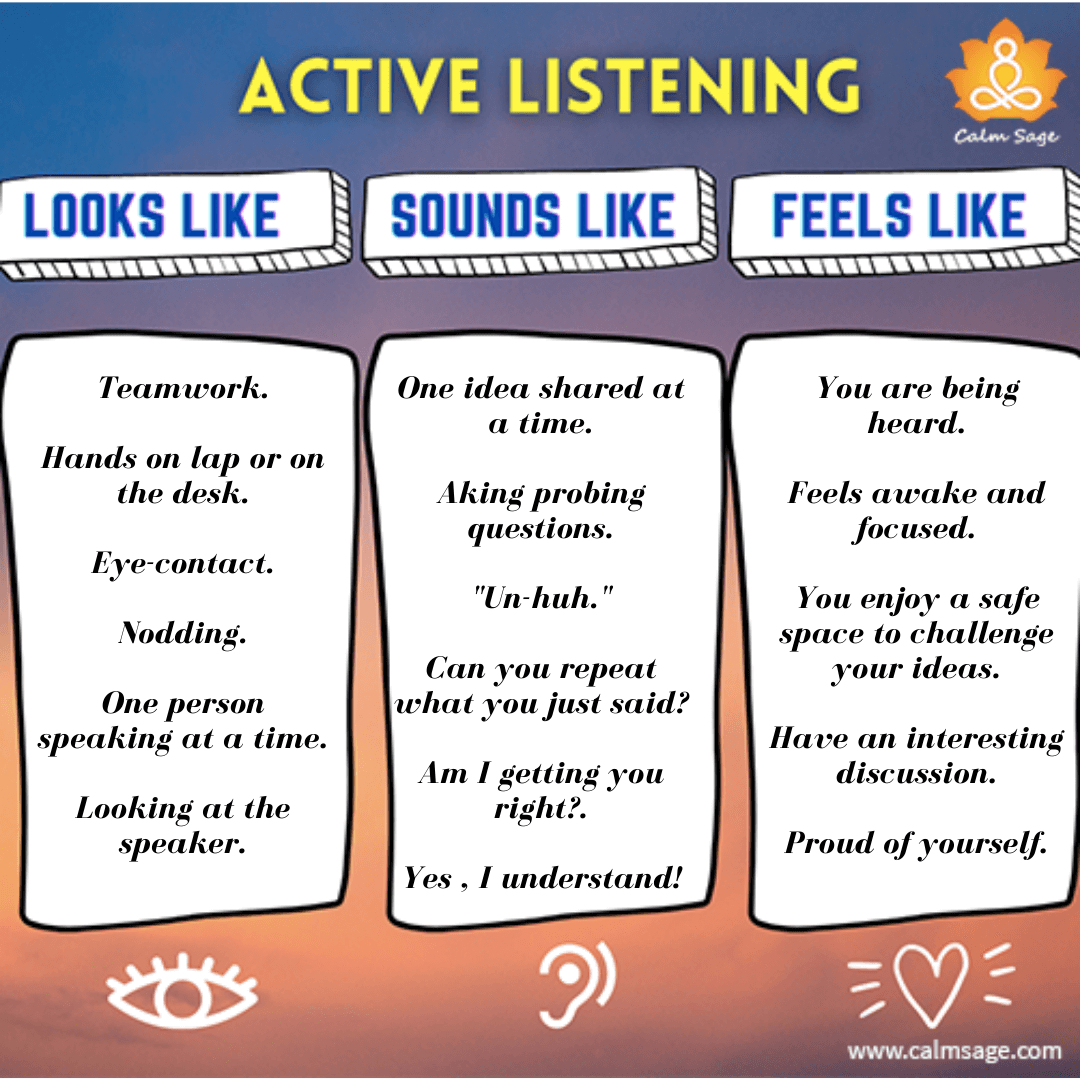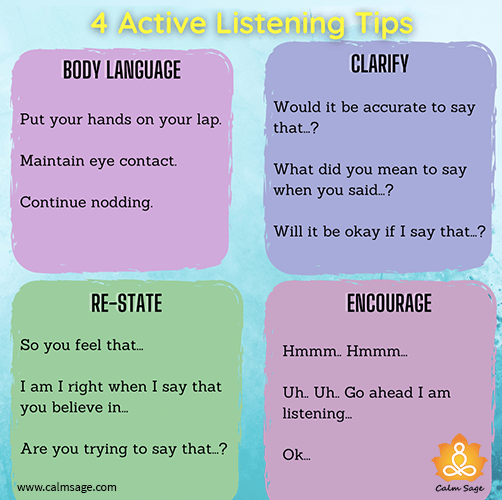How To Practice Active Listening | Unlock The Benefits

Active listening shows the speaker that you are interested in what they have to communicate. It is an important communication skill that ensures that you correctly understand the other person.
Also Read: What is Active Listening
“When you talk, you are only repeating what you already know. But if you listen, you may learn something new.” ~ Dalai Lama
His Holiness rightly quoted the importance of listening in our lives. Still 95% of the time we are listening to reply rather than to comprehend. Which is sad!
Table of Content
When we are not listening, we are not focused, and we are not understanding the needs of the other person. Which may result in a negative pattern in our life. Therefore, it is important to practice active listening. Where we won’t listen to reply but to understand, enjoy, learn, and gather information.
Well, you can train your brain to be more engaged in a conversation. This simple, clean, and amazing way to make it happen is by practicing active listening. But wait! Is active listening all about understanding the other person or there is more that it has to offer?
It might surprise you but active listening has a pool of benefits to offer!
Benefits of Practicing Active Listening
If you are still wondering why you should practice active listening here is a pool of benefits that active listening has to offer.
- Active listening helps to clear any sort of communication misunderstandings.
- You can build strong and healthy relationships with active listening.
- Surprisingly, active listening is found to improve your productivity.
- Any form of distractions and disagreements can be removed (or at least reduced) with active listening.
- You offer a reflection to the speaker through active listening.
- A focus conversation can be achieved with the help of active listening.
- It is great to be a successful entrepreneur and businessman.
- Active listening is linked with great leadership skills.
- You can show empathy through active listening.
Now you might want to put active listening to practice! (Continue reading)
5 Tips To Practice Active Listening
With so many benefits to offer you might think that active listening will require a lot of practice and effort. But that’s not the case. By applying these 5 simple tips to your life and communication, you will be able to make active listening a part of your life.
1. Bring All Your Senses To Play
You can’t call a conversation as active listening if you are swiping through your phone, looking outside the window, or playing the pen kept on the table. To make sure that you are not just sitting and nodding, calling it active listening.
So, it is important to bring all your senses to play.
- Keep distractions away.
- Be all ears to the other person.
- Keep your lips sealed until and unless probing is required.
- Most importantly maintain eye-contact with the other person. Maintaining eye contact is at the heart of active listening. It gives a strong and straight message to the other person that you are completely focused on and consumed in what he has to convey. Psychologically speaking, it helps you stay connected with the person.
2. Maintain Engaging Body Language
Your body language plays an important role in active listening. It will represent how interested you are in a conversation by giving non-verbal cues to the speaker.
Here are some of the most preferred body language ideas:
- Lean slightly forward (it shows that you are showing interest).
- Maintain eye-contact (it gives the message that you are focused and not distracted).
- Nod occasionally (it will denote that you are attentive).
- Give a smile (if required).
- When you have anything to speak, make sure that your voice pitch is low and soft. This denotes that you are empathizing with the other person.
3. Offer Minimal Encouragers
To make sure that you are not half asleep in between the conversation and to give this reassurance to the speaker you should use positive prompts in between.
These positive prompts are also called encouragers. They give the message that yes you are there listening and you want to listen more. Plus, these triggers will keep you engaged as well.
This includes petite (small) positive prompts like:
- .. Hmm…
- Oh!
- Okay…
- Then?
- Umm…
- And?
- (and more)
4. Ask Probing Questions
There can be two purposes and two relative ways to ask probing questions in active listening. We shall consider both one by one.
1. To Dig Deeper:
Asking probing questions in conversation is a way to stimulate your thinking, listening, and allows you to gather new information. It also benefits the speaker as they get to discover a relatively new angle of the situation with one question of yours.
You may ask a probing question like- “So, what did you want it to be like?” “What would have changed if…?” and alike.
2. To Ensure You Are On The Same Page:
Give the speaker a clear message that you are listening to him. Also, ensure that you are on the same page in terms of understanding, you can use restating questions.
This way, you won’t be forming any assumptions or holding any misconceptions. A restating question can be like- “What I understand so far is…” “Correct me if I am wrong but what you mean to say is…?”
5. Hold Your Urge To Interrupt or Offer Judgement
Put a pause on your internal mind chatter and hold your urge to interrupt in between conversations. If you are going to be occupied with your own thoughts then how are you even going to pay attention? It might allure you to just interrupt and ask the questions that are popping in your head but rather than coming as a sign of active listening it might show rudeness.
This is obvious as you didn’t let the other person stop. It is advised that you let the other person take a pause of 2-5 seconds before asking questions. Along with this, remember the person trusts and perhaps is sharing his feelings with you so it will be better if we can put our bag of judgment to thrash (thank you).
Here is a Pro-Tip to Interrupt Without Making it Sound Rude!
Let the speaker pause for 2 to 5 seconds. Ask him what you understood so far by simply summarizing and paraphrasing what has been said. This will help clear out any discrepancies too.
How To Encourage Active Listening (Let Us Participate Together)
If you are thinking that what if I am interested in putting up an interesting conversation but my significant other, colleague, or boss is not? Well, we are offering you a solution to such circumstances too.
Just remember to wear a TIE. Here TIE stands for:
T: Take a Topic That Interests You Both: Begin your conversation that interests you both so that you both are on the same page.
I: Incorporate Your Active Listening Skills: Show your active listening skills to the other individual. This is likely to give them a message that you are listening actively and they will demonstrate the same so that you get the same good feeling.
E: Exist if it Doesn’t Work Well: If you can see that the other person is more interested in speaking rather than listening then you might end the conversation.
Active Listening Printables For You:
If you want to make active listening a part of your daily communication but would love to have daily reminders? Download and print these Active Listening printables for you and others!!!
5 L’s of Active Listening

Active Listening Looks, Sounds, And Feel Like

4 Important Areas of Active Listening

Videos on Active Listening
Here are some useful, active listening videos for you to watch.
1. Active Listening
2. 6 Tips for Active Listening
3. Active Listening: How To Communicate Effectively
4. Improve Your Listening Skills with Active Listening
Books on Active Listening
Here are the best books that can help you with active listening.
| Books | Buy on Amazon |
|---|---|
| 1. Active Listening – The Forgotten Skill: Active Listening Skills | Get It Here. |
| 2. The Lost Art of Listening, Second Edition: How Learning to Listen Can Improve Relationships | Get It Here. |
| 3. Active Listening Techniques: 30 Practical Tools to Hone Your Communication Skills | Get It Here. |
Which tip are you going to begin practicing active listening with? Do share it with us in the comments section.
Remember to be all ears to your friend next time. Plus, do let them know about this magical skill and help them grow in their life.
Thank you for reading!





















In childhood, I remember that our teachers used to say that it is more important to be a good listener than a good speaker.
I am a pro active listener and now these tips also help me a lot to improve my skills in active listening.
This is really very important.
Active listening can help others gain confidence in you.
That's so informative, I'll pass it on to my friend working in customer care domain!
Worth reading this article... loved the printables
Although it's really difficult, I am going to implement all these tips to become an active listener!